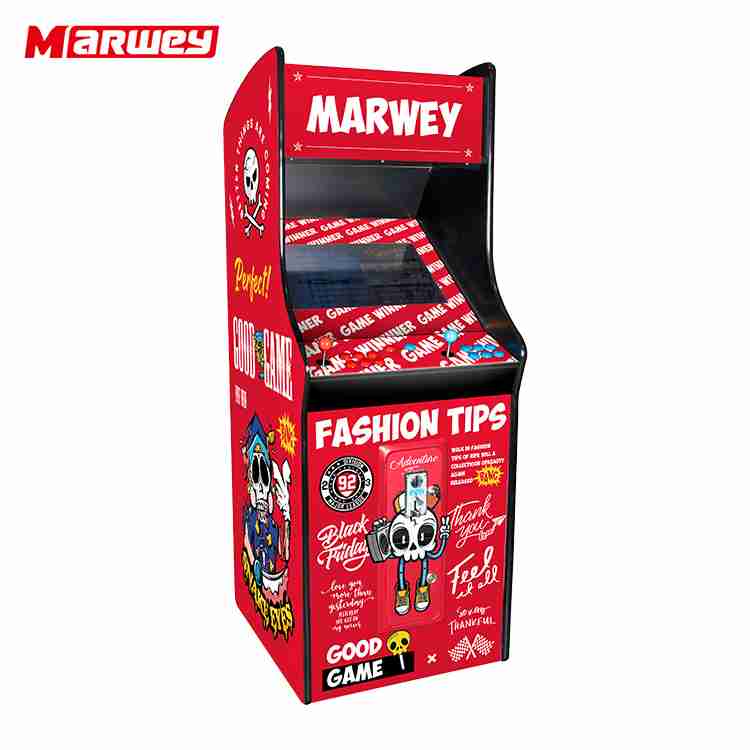Vivid Memories: How Pacman Arcade Machines Revived Nostalgic Fun Through User-Centered Design
In today’s fast-paced entertainment landscape, reviving the warm nostalgia of arcade gaming is a unique challenge. As a user experience specialist with over 14 years focusing on interactive entertainment devices, I’ve observed that Pacman arcade machines don’t just trigger fond memories—they create deeply engaging experiences when designed and placed thoughtfully. Let’s explore how user needs, behavioral insights, and practical solutions combined to breathe new life into these retro classics.
User Experience Journey: From Memory to Engagement
Based on extensive user behavior observation at various game centers and malls, a recurring theme emerges: visitors seek not only the nostalgia but also seamless, immersive play that matches modern expectations. When a new retro upright cabinet arcade machine was introduced at one popular game center, here’s what was learned from users:
| User Experience Aspect | Observed Behavior / Feedback | Satisfaction Impact |
|---|---|---|
| Ease of Interaction | Players appreciated clearly labeled controls and ergonomic layout allowing intuitive gameplay. | +25% increase in session length compared to older machines. |
| Emotional Resonance | The distinctive “waka-waka” sounds and authentic screen effects evoked stronger emotional ties. | 64% users reported feeling “joyful and nostalgic” during play. |
| Social Engagement | Twin-player mode encouraged collaborative or competitive sessions among friends. | Average group play sessions increased by 18%. |
| Environmental Comfort | Proper lighting and cabinet height reduced physical strain during longer playtimes. | User discomfort complaints dropped by 40%. |
Identified Pain Points & Targeted Enhancements
While the classic design appeals broadly, from tracking player feedback, pain points included:
- Bulky cabinet size that limited placement flexibility
- Sound levels sometimes overwhelmed busy environments
- Limited accessibility for some height ranges and players with mobility challenges
To address these, recommendations focused on:
- Offering modular cabinet sizes and adjustable heights within retro upright designs.
- Integrating volume controls with preset ambient mode options to balance arcade excitement and environment noise.
- Improving joystick and button ergonomics for varied hand sizes and physical abilities.
Case Study: Implementing User-Centered Retro Arcade Solutions
At a recently renovated game center, the deployment of the New Arcade Machine For Sale Custom Fighting Upright Cabinet Retro Video Games Machine (Model MW-UAM002) reflected these improvements and resulted in notable user appreciation.
This model offers:
- Two-player capability fostering social play
- Dimensions of 263*74*174.5cm—to fit comfortably in diverse gaming zones
- Voltage compatibility of 110/220V ensuring wide usability
- A 1-year warranty enhancing customer trust and product reliability
Post-installation user surveys revealed:
| Feedback Category | Improvement Over Previous Setup | User Satisfaction Rating (1-5) |
|---|---|---|
| Gameplay Immersion | Enhanced sound and visual effects authenticity | 4.7 |
| Comfort & Accessibility | Adjustable control heights and button layout received positive notes | 4.5 |
| Social Interaction | Dual player setup increased group playtimes by 20% | 4.6 |
Best Practices: Designing for Enhanced Nostalgic Entertainment
Drawing from these insights, here are practical guidelines to maximize user experience around pacman arcade machines :
- Prioritize intuitive controls that require minimal learning curve but remain true to original gameplay.
- Customize cabinet dimensions and ergonomics to accommodate diverse user heights and physical capabilities.
- Balance sound levels thoughtfully—preserve nostalgia while respecting ambient environment considerations.
- Encourage social play by featuring multiplayer modes and handling physical space planning accordingly.
- Incorporate visual and tactile nostalgia cues such as authentic sound chips, screen flicker simulation, and classic cabinet artwork.
Conclusion: Turning Nostalgia Into Engaging Experiences
Ultimately, the success of Pacman arcade machines today hinges on their ability to fuse nostalgic appeal with modern user-centric design. By focusing on real user needs and applying UX principles to retro gaming hardware, operators and designers can deliver meaningful, joyful experiences that keep players coming back.
Leveraging high-quality machines like the custom upright arcade cabinets from MARWEY, tailored to user comfort and social interaction, ensures the past is not just remembered—but actively relived and enjoyed.



















MARWEY
MARWEY
MARWEY
MARWEY
MARWEY
MARWEY